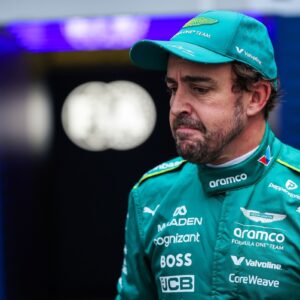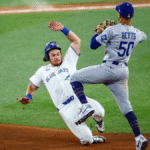A person named Ben Bernhard would acknowledge his novice status in racing, but he brings unique skills to his roles as the CEO and a co-founder of Stable Analytics, as well as vice president of Pin Oak Stud, a Thoroughbred farm located near Versailles, Ky., and owned by his parents, Jim and Dana. The couple’s initial racehorse was the Grade 1 winner Geaux Rocket Ride, acquired as a yearling in 2021, followed by the purchase of Pin Oak the subsequent year.
Stable Analytics integrates current engineering and data science into the horse racing sector. Its prominent products encompass equine wearable biometric sensors (Equigraph) designed for safety monitoring and the prompt identification of musculoskeletal injuries in Thoroughbreds, coupled with data-driven pedigree modeling aimed at forecasting optimal racetrack outcomes (Equient).
Bernhard, aged 28, previously worked as an engineer for SpaceX, a firm specializing in the design and launch of advanced rockets and spacecraft.
His responses have undergone editing for enhanced clarity and brevity.
BloodHorse: How did the company you helped create, Stable Analytics, begin?
Ben Bernhard: My knowledge is in tech, engineering principles, and data science. As I began to participate in horse racing, my objective was to contribute using technology, and Stable Analytics concentrates on that.
BH: Was it hard to stop working at SpaceX?
BB: I’ve always wanted to work in the space sector since I was in school. My only goal was space. Although I enjoyed my employment at SpaceX, my family’s growing involvement in horse racing also piqued my interest. I realized the potential for technology to significantly impact the industry, and I found the sector to be very engaging, which inspired me to make the shift.
BH: Your team at Stable Analytics, made up of Byron Rogers, research and development director, and Dr. Tim McGrath, engineering director, are experts in many fields.
BB: Each individual was chosen for their particular skill set. It involves creating a group with knowledge of data science and engineering as well as the horse racing business. Byron’s skills in data science and pedigree analysis are the reason he’s here. At Stable Analytics, his main area of focus is developing this machine learning-based pedigree system. Tim’s knowledge of estimation theory, particularly as it relates to our wearable technology, was the reason he was hired.
BH: Equibase works with Stable Analytics on your wearable devices. How did that alliance develop?
BB: Stable Analytics is a small group of people with considerable knowledge of engineering and product development, and Equibase is unmatched at widely disseminating data in the field. We believed that collaborating with them would enable us to launch our product as fast and effectively as we could.
BH: Where in the production process are Stable Analytics’ wearable devices?
BB: They are still being researched. The American Association of Equine Practitioners is in charge of the main research. For the study’s final stage, which runs from January 1, 2025, to the end of 2025, they have chosen six wearable firms for a study this year. Each sensor business hires a minimum of 100 2-year-olds to wear the wearables during the course of the year. Every wearable firm will examine each horse, forecast injuries, and send the data to the study database. The AAEP will then monitor which sensors are correctly identifying injuries before they occur.
Pin Oak is also where we use the wearables.
BH: What tasks do you handle at Pin Oak?
BB: We generally prefer to make well-informed judgments based on facts and conventional horsemanship. I’m in charge of making high-level decisions and strategy, and the majority of it is based on data-driven analysis, whether it’s for breeding selections like matings, racing selections like choosing races for horses, trainer selections, or sales selections. I truly try to contribute a data-driven strategy to anything because we have additional professionals that are excellent horsemen and can offer that viewpoint.
BH: What are you hoping to accomplish by taking part in the industry?
BB: My main goal is to completely eliminate catastrophic injuries, which is a very high goal that will take many years to achieve. But the aim is really to have zero catastrophic injuries, and anything less is unacceptable.
That’s great if the sensors have a part in it. If we discover anything else, that’s fantastic. I’ll discard the sensors and do what they advise if someone else comes up with something different. I just want the injuries to stop, really.
BH: How much do you appreciate being able to combine your interests in science and horses?
BB: I really appreciate it. I used to oversee a mission for a year or two while stationed in Mission Control as part of my job at SpaceX. It’s a tremendous, wonderful feeling to be a part of it, to be actively participating in Mission Control, and then to see it all come together and be successful. My friends from there wonder, “Don’t you miss that feeling?” I tell them that it’s similar to watching your horse win a race after putting in a lot of effort with that horse. Maybe you bred the horse, took care of it, and studied the data while it was in training before watching it win.
BH: You had strong feelings for your parents’ first horse, Geaux Rocket Ride. How did you react to his life-threatening injury?
BB: I was residing in L.A. at the time that Richard Mandella was training him at Santa Anita. I would travel there on the weekends to see him practice. That is what truly piqued my interest in racing. I have become so committed to injury prevention as a result of what occurred to Geaux Rocket Ride.












